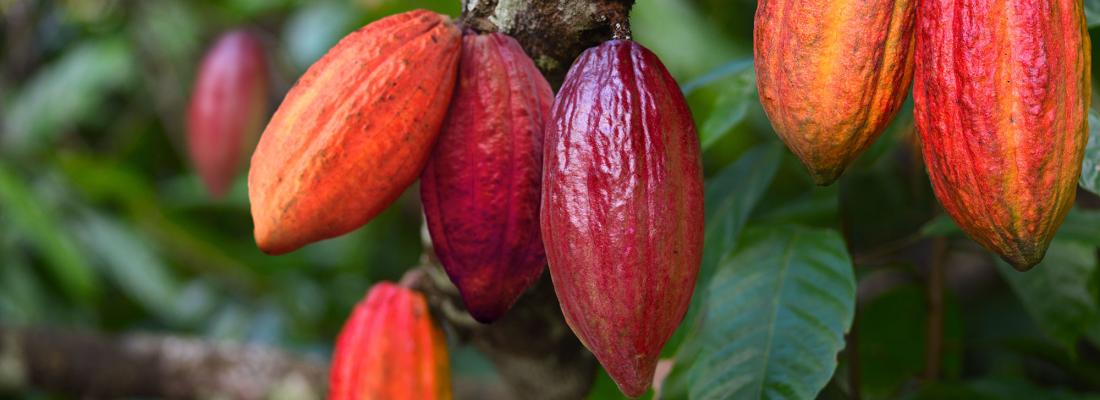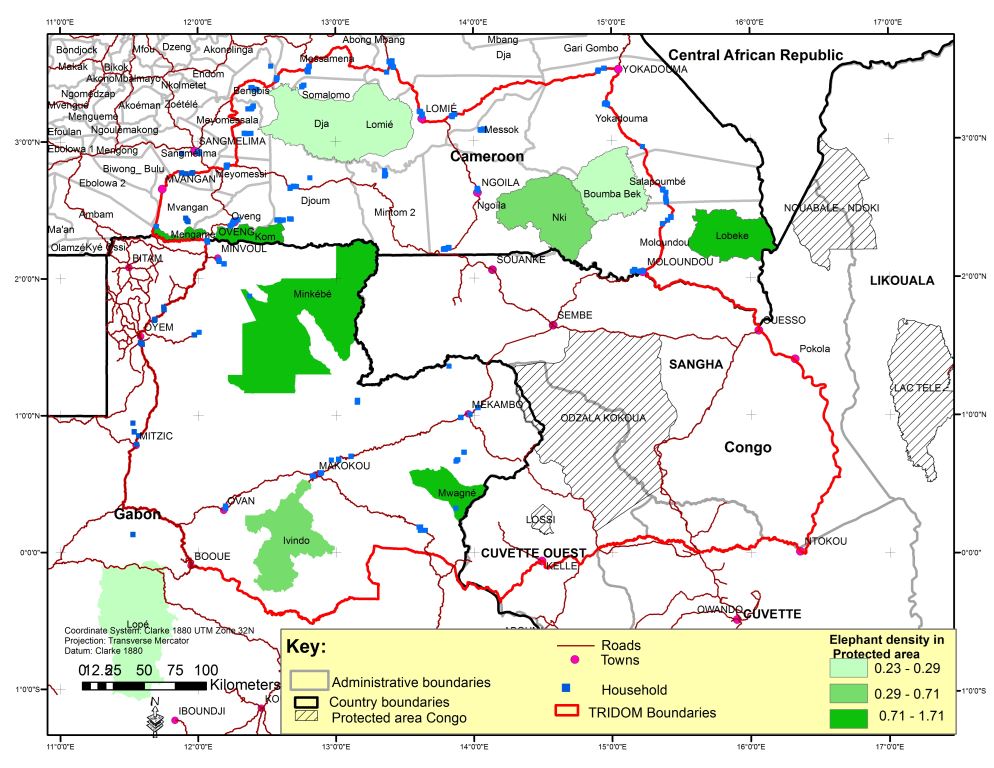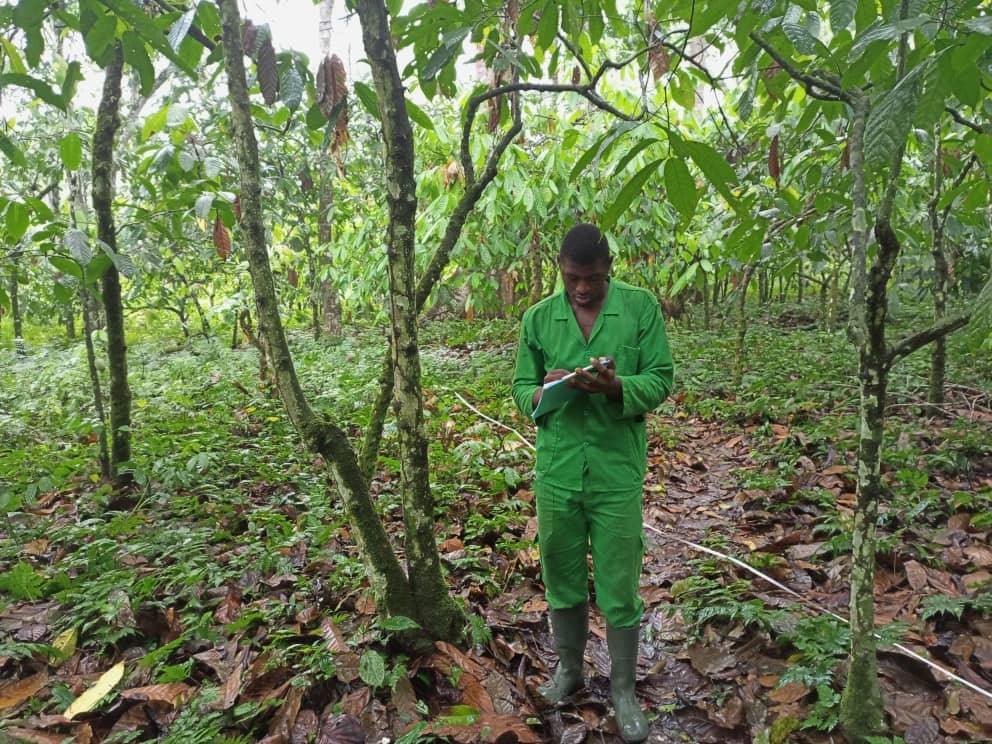Biodiversity Reading time 5 min
Cocoa at the heart of deforestation: the urgent need to regulate land use effectively in the Congo Basin
Published on 08 July 2024

Most of the world's deforestation is caused by converting forests into agricultural land to meet local, national and international demands. This deforestation threatens biodiversity conservation and significantly contributes to man-made greenhouse gas emissions. Yet, forests are widely recognised as safety nets that enable local populations to mitigate agricultural risks and cope with seasonal and climatic stressors, among others. About 75% of the world's poor population live in rural areas, and about 90% of them rely on agriculture for subsistence. In these areas, forests are a crucial resource, providing essential products and services and accounting for 22% to 27% of the total household income.
In the Congo Basin, small-scale deforestation has major consequences
Households in the Dja-Minkebe-Odzala Transboundary Conservation Landscape (Tridom), spanning Cameroon, Gabon and the Republic of Congo, rely on a variety of livelihood strategies: subsistence farming, agricultural export production (such as cocoa), or forest-based activities such as harvesting non-timber forest products—Irvingia spp., Ricinodendron heideulotti and Gnetum africanum being the most widely consumed. These choices determine land use and forest resource extraction, with a direct impact on deforestation and forest degradation.
In the Congo Basin, deforestation due to agriculture is mainly attributed to small-scale farmers using slash-and-burn techniques.
In this area, two forest management regimes coexist: the ‘permanent forest estate’, which must remain forested and supports biodiversity, e.g., logging concessions and protected areas; and the ‘non-permanent forest estate’, which is open to agricultural activities and infrastructure development. Unlike South-East Asia and the Amazon basin, where large-scale agricultural operations predominate, deforestation from agriculture in the Congo Basin is mainly attributed to small-scale farmers using slash-and-burn techniques. Surveys show that 85% of households in the Tridom are responsible for changing forest to other uses.
Extensive and unsustainable family farming, based on slash-and-burn cultivation, exacerbates small scale deforestation and forest degradation. Without optimal crop rotation, soil fertility and crop yields decline, contributing to the over-exploitation of resources and the perpetuation of poverty.

An econometric study identifies an essential lever for tackling deforestation
To help design effective policies to combat small-scale deforestation in the Congo Basin, INRAE scientists, in collaboration with UNEP-WCMC, the International Institute of Tropical Agriculture, the Congo Basin Institute, CIFOR and the University of California, Los Angeles, have analysed the factors underlying this phenomenon. Based on original data collected from 1,035 households in the Tridom conservation landscape, this study highlights the impact of livelihood strategies on deforestation. Using a spatial econometric procedure, this pioneering research also stresses the importance of interactions among farmers, thus addressing a significant shortfall in econometric analyses of tropical deforestation in Central and West Africa.

Cocoa, a threat to the forest
In the case of households, the higher the income from cocoa farming, the greater the risk of deforestation.
Households specialising in cocoa production have a greater impact on deforestation: the higher the income from this crop, the greater the risk of deforestation compared to other livelihood strategies. Cocoa poses a higher risk of deforestation because the income from the crop often finances the expansion of agricultural land. In addition, spillover effects from strategies focusing on cocoa production can amount to up to 20% of these households' direct effects, and are equivalent to all direct effects of other livelihood strategies. The intensification of cocoa production, even within a sustainable framework, attracts new farmers and increases deforestation. Therefore, although cocoa agroforestry can contribute to conservation, without land-use zoning or appropriate incentive policies, cocoa-related prosperity will continue to threaten forests.
Social and economic conditions that influence deforestation
Deforestation in the Congo Basin is driven by a number of factors. Better access to the market results in less auto-consumption of agricultural produce and greater deforestation. Disputes over land and geographical distance from protected areas do not have a significant impact, while human-wildlife conflicts—particularly between humans and elephants—add to the problem, underlining the importance of developing wildlife protection policies that include local populations. Spatial interactions play a crucial role: households imitate their neighbours in terms of deforestation activity. The hiring of Baka indigenous people by Bantu communities tends to favour intensive land use, and is therefore associated with greater deforestation, while family labour does not have a significant impact. Factors such as gender and age are decisive for cocoa cultivation, which is physically more demanding, and therefore results in a larger rate of deforestation by men. In short, economic development, which favours cash crops such as cocoa and access to markets, is associated with increased deforestation.
More effective planning and regulation to save the forest
At a time when international trade regulations are increasingly favouring deforestation-free products, there is an urgent need to come up with a development model that integrates the improvement of living standards and resilience of households, with the preservation of forest ecosystems. To rise to the challenge of deforestation linked to cocoa production, a strategic approach involving the farmers themselves is needed. Such an approach would combine the promotion of complex agroforestry systems with better land-use planning and incentives for sustainable agricultural and forestry practices. At the same time, research and support initiatives are essential to improve agricultural yields in a sustainable way, as increased productivity can help reduce pressure on vulnerable forest areas.
Have you heard of climate-smart agriculture?
According to the FAO, climate-smart agriculture is an approach that defines the actions needed to transform agricultural systems with the aim of ensuring effective agricultural development and food security in the face of climate change. This approach has 3 main objectives:
- sustainably increasing agricultural productivity and incomes (food security);
- adapting and building resilience in the face of climate change (adaptation);
- reducing and/or eliminating greenhouse gas emissions (mitigation).
From this perspective, a complex and well-managed cocoa agroforestry system constitutes a sustainable tool for forest landscapes. It benefits local farmers and contributes to nature conservation. Such a system would also align with international regulations aimed at decoupling cocoa from deforestation and improving biodiversity. These regulations include the European Union's deforestation-free regulation, the European Union's Corporate Sustainability Due Diligence Directive (CSDDD) and the United Kingdom's due diligence law. These measures aim to prevent deforestation products from entering the EU and UK markets by requiring companies to conduct due diligence in their supply chains.
REFERENCE
Ngouhouo-Poufoun J., Chaupain-Guillot S., Ndiaye Y. et al. (2024). Cocoa, livelihoods, and deforestation within the Tridom landscape in the Congo Basin: A spatial analysis. Plos one, 19 (6), e0302598. https://doi.org/10.1371/journal.pone.0302598
This project received financial support from the UKRI GCRF (project ES/S008160/1), CIFOR-GCS M3 via NORAD (grant QZA-12/0882) and the ANR Investissements d'Avenir programme (LabEx ARBRE, ANR-11-LABX-0002-01). The funders had no influence on the design of the study, the collection and analysis of the data, the decision to publish or the preparation of the manuscript.
